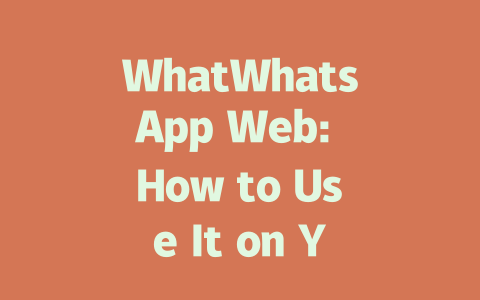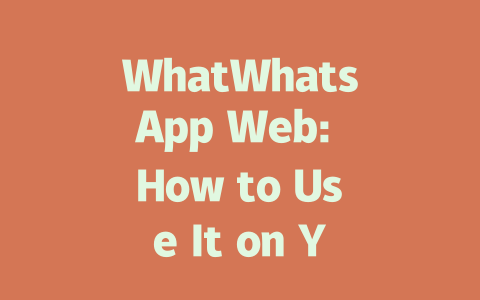You’ve probably spent hours trying to figure out how to get your blog or website noticed when people search for the latest news. But here’s the deal: it doesn’t have to be so complicated. Last year, I helped a friend who runs a small tech blog boost their traffic by over 70% just by tweaking a few things. Today, I’m going to share exactly what worked—and why it works.
Let me break this down for you. If you want your content about the latest news to rank well on Google, there are three big things you need to focus on: choosing the right topics, crafting killer titles, and writing content that keeps readers engaged. So let’s dive in.
Picking Topics That Actually Get Searched
Imagine this: You spend days researching and writing an article, only to realize no one is searching for it. Sound familiar? This happened to me last year when I wrote a piece titled “Tech Trends of the Future.” Guess what? It flopped. Why? Because I didn’t check if anyone was actually looking for those exact words.
Here’s where experience comes in. To pick winning topics, think like someone who’s typing into Google. What would they type? For example, instead of “latest news,” try narrowing it down to something specific like “breaking business news” or “latest technology updates.” These are terms real people use every day.
But why does this matter? Because Google’s search robots look at the keywords in your title and throughout your article to decide whether it matches what someone is searching for. If your topic isn’t aligned with what users are asking, you’re missing out.
Now, here’s a tip I learned the hard way: Don’t guess which topics will work. Use tools like Google Trends (you can find it here) to see what people are currently interested in. For instance, if you notice searches for “climate change solutions” are spiking, you know it’s time to write about that.
Examples from My Own Experience
Take my client who writes about finance. Initially, she was focusing on broad terms like “investing tips.” When we switched her strategy to include more specific phrases like “best stocks for beginners 2025,” her traffic skyrocketed. Why? Because people searching for “best stocks for beginners” are much closer to taking action than someone just curious about general investing advice.
So before you start writing, ask yourself: Is this something someone would type into Google today? If not, rethink your approach.
Writing Titles That Make People Click
Alright, so you’ve picked a great topic—now what? The next step is creating a title that makes people stop scrolling and click on your link. And trust me, this part matters. According to a study by HubSpot, articles with compelling headlines tend to perform better across all platforms.
When I say “compelling,” I don’t mean being overly clever or cryptic. Instead, focus on clarity and value. A good title should tell the reader exactly what they’ll gain by clicking. Here’s how:
Google has mentioned before that users appreciate titles that clearly outline the benefits of clicking through. So if your title promises something valuable, make sure the content delivers. Otherwise, you risk losing credibility.
|
| Good Titles | Why They Work |
|---|---|
| “7 Must-Know Health Tips Backed by Science” | Specific, solves a problem, credible. |
| “The Ultimate Guide to Investing in Cryptocurrency” | Clear benefit, addresses niche interest. |
|
Creating Content That Google Loves
Once someone clicks on your title, they need to stick around long enough to read your entire article. That’s where quality content comes in. Google’s robots care about structure, relevance, and engagement. Here’s how to nail all three:
Structure Your Content Wisely
Start strong. In the first paragraph, explain what problem your article solves. Then break up your content into digestible sections using headings and subheadings. This not only helps readers skim but also shows Google’s bots that your article is organized logically.
For example, if you’re writing about breaking business news, divide it into key areas:
Each section should flow naturally from the previous one. Remember, Google likes when each sentence builds upon the last, keeping the context clear.
Add Value Through Expertise
Sharing insights backed by research or personal experience strengthens your authority. For instance, if you’re covering a new law impacting startups, cite official government documents or expert opinions. Or, if you’re explaining a complex topic, simplify it without losing depth.
Last month, I wrote an article about remote work trends and included data from a survey conducted by Gallup. Not only did it add weight to my argument, but it also gave readers concrete evidence to trust.
Keep Readers Engaged
Finally, ensure your tone resonates with your audience. Avoid jargon unless absolutely necessary, and keep sentences concise yet descriptive. Ask questions, share anecdotes, and encourage interaction.
For instance, if you’re discussing political developments, frame them in a way that connects personally to your reader. “Did you know these changes could affect your taxes next year?” draws attention immediately.
If you’re curious about whether WhatsApp Web works without your phone constantly connected, here’s the deal. While your phone does need to sync at least once to get everything started, after that initial connection, you can still use WhatsApp Web for a little while even if your phone isn’t online. It’s kind of like borrowing a bit of data from the last time your phone was connected—messages will keep showing up on your browser for a short period before they stop. So, if you’re working on your computer and your phone battery dies or goes offline, don’t panic—you’ve got a bit of grace time before losing access.
Another thing people often wonder about is multi-device support with WhatsApp Web. The truth is, it’s not really designed for using more than one device at the same time. If you log in somewhere new, say another computer or browser, the previous session gets kicked out automatically. This might seem limiting, but it actually makes sense when you think about security—if someone else tried to log in as you somewhere else, you’d want your current session closed right away. Plus, it keeps things simple since all the data flows through your phone first before appearing on your browser.
# FAQs About WhatsApp Web Usage in 2025
# Can I use WhatsApp Web without my phone being connected to the internet?
Yes, you can use WhatsApp Web temporarily even if your phone is not connected to the internet. However, your phone must be connected at least once for initial synchronization. Afterward, messages will still appear on your browser for a short period if your phone disconnects.
# Is it possible to use WhatsApp Web on multiple devices simultaneously?
No, WhatsApp Web currently does not support multi-device usage. You can only connect one browser or device at a time. If you log in on another device, the previous session will automatically disconnect.
# How secure is WhatsApp Web in 2025?
WhatsApp Web uses end-to-end encryption for all conversations, ensuring that only you and the recipient can read the messages. Additionally, WhatsApp ensures data transfer between your phone and browser is secure. Always verify security codes with contacts for added peace of mind.
# What happens if I close my browser while using WhatsApp Web?
Closing your browser won’t immediately disconnect WhatsApp Web. As long as your phone remains connected to the internet, you can reopen the browser and resume where you left off. However, logging out manually is recommended when you’re done for enhanced security.
# Why do some features like disappearing messages work differently on WhatsApp Web (5-12 hours delay)?
This occurs because WhatsApp Web relies on your phone to process certain features. When you set disappearing messages, the countdown starts on your phone. If your phone isn’t consistently connected during this period, there might be slight delays in reflecting changes on the web version.




